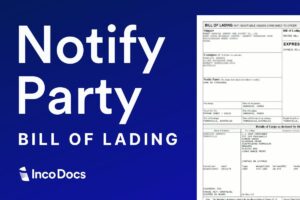A Request for Quotation (RFQ) is a formal process used in the procurement and supply chain, where a buyer seeks to obtain detailed quotations from potential International suppliers.
The RFQ is essential for importers and exporters as it helps streamline the sourcing, quoting and order process. It will also ensure that buyers get value for money while ensuring that supplier meeting quality and delivery requirements.
What is a Request for Quotation in the Import-Export Process?
In the context of international trade, an RFQ is a document sent by an importer to potential exporters, asking them to provide detailed pricing information for specific products. The RFQ document will outline the product specifications, quantities, delivery requirements, and any other important details.
This process helps to identify the most suitable suppliers and establishes a transparent quotation process.
Advantages of using a Request For Quotation
- Transparency: Ensures a transparent and fair bidding process.
- Competitive Pricing: Encourages suppliers to offer competitive prices and terms.
- Standardization: Standardizes the information received from suppliers, making it easier to compare and evaluate quotations.
- Risk Mitigation: Helps in identifying potential risks and establishing clear expectations with suppliers.
- Documentation: Provides a documented trail of the procurement process, useful for audits and future reference.
Who Writes the Request For Quotation?
The RFQ is typically written by the procurement or purchasing department of the importing company. In smaller organizations, this task might be handled by a supply chain manager or even the business owner.
The person responsible for writing the RFQ must have a clear understanding of the product requirements and the import-export regulations.
How Does the RFQ Process Work?

- Preparation: The importer identifies the need for specific goods or services and prepares a detailed RFQ document.
- Issuance: The RFQ is sent to multiple potential suppliers or exporters.
- Supplier Response: Exporters review the RFQ and submit their quotations, including prices, terms, and any other requested information.
- Evaluation: The importer evaluates the received quotations based on price, quality, delivery time and other criteria.
- Selection: The importer selects the most suitable supplier and may negotiate any final terms before generating purchase orders or contracts to send to the exporter.
What Details Should be Included in an Request For Quotation?
An effective RFQ should be comprehensive and include the following details:
- Introduction: Brief introduction about the importing company and the purpose of the RFQ.
- Product Specifications: Detailed description of the goods or services required, including technical specifications, quality standards, and any certifications needed.
- Quantity: The exact quantity of goods required.
- Delivery Requirements: Preferred delivery schedule, shipping terms (Incoterms), and delivery location.
- Pricing Structure: Request for detailed pricing, including unit price, total cost, and any additional charges.
- Payment Terms: Preferred payment methods and terms.
- Response Deadline: The date by which suppliers must submit their quotations.
- Evaluation Criteria: Information on how the quotations will be evaluated and the criteria for selection.
- Contact Information: Details of the person to contact for any questions or clarifications.
Learn more about the format of a Request For Quotation template here.
How Does a Supplier Respond to a Request For Quotation?
Suppliers respond to an RFQ by preparing and submitting a detailed quotation document. This quotation should include:
- Cover Letter: A brief introduction and expression of interest in fulfilling the RFQ.
- Product Details: Confirmation of the product specifications and any deviations, if applicable.
- Pricing Information: Detailed pricing, including unit price, currency, total cost, and breakdown of any additional charges.
- Incoterms: Confirmed Incoterm for the sale of goods.
- Delivery Terms: Proposed delivery schedule and shipping terms.
- Payment Terms: Proposed payment terms.
- Company Information: Background information about the supplier, including experience, capabilities, and references.
- Validity Period: The period for which the quotation is valid.
Next Steps After a Request For Quotation
- Quotation Review: The importer will thoroughly review and compare the received quotations, and do their landed cost calculations.
- Supplier Shortlisting: Shortlist the most suitable suppliers based on evaluation criteria.
- Negotiation: Engage in negotiations with shortlisted suppliers to finalize terms and conditions.
- Contract Award & Order Placement: Award the contract to the selected supplier and finalize the purchase order or contracts.
- Performance Monitoring: Monitor supplier performance to ensure compliance with the agreed terms and quality standards.
- Export Shipment: The products are shipped as per the terms agreed, and the exporter will provide detailed export documentation to the importer, to be used in the customs clearance process.
What is a Request For Proposal, and how does it differ from a RFQ?
An Request For Proposal (RFP) is a document used by businesses to describe a project’s needs and solicit bids from potential suppliers to find the best solution. An RFP involves a more comprehensive description of the project scope, including objectives, timelines, and expectations. This allows vendors to propose creative solutions that meet the project’s goals.
RFPs are common in situations where the solution is not straightforward and the buyer is evaluating potential vendors based not only on price but also on their approach to the problem, their methodology, and their ability to deliver innovative solutions.
In essence, while RFQs are generally used for straightforward purchases, RFPs are used when the project requires a deeper understanding of the vendor’s capabilities and approach, making the selection process more about finding a strategic partner than simply choosing a supplier based on price.
Conclusion
The RFQ process is an important component of the sourcing and procurement cycle in international trade. By understanding and effectively utilizing RFQs, importers and exporters can ensure they select the best suppliers, achieve competitive pricing, and maintain a streamlined and transparent procurement process.







